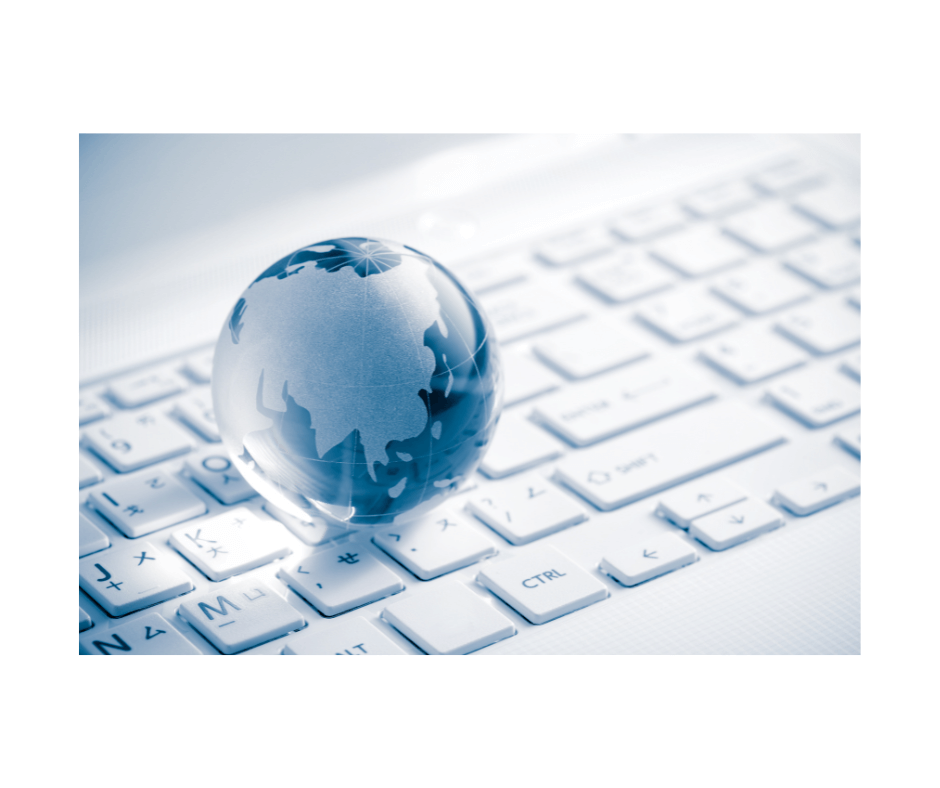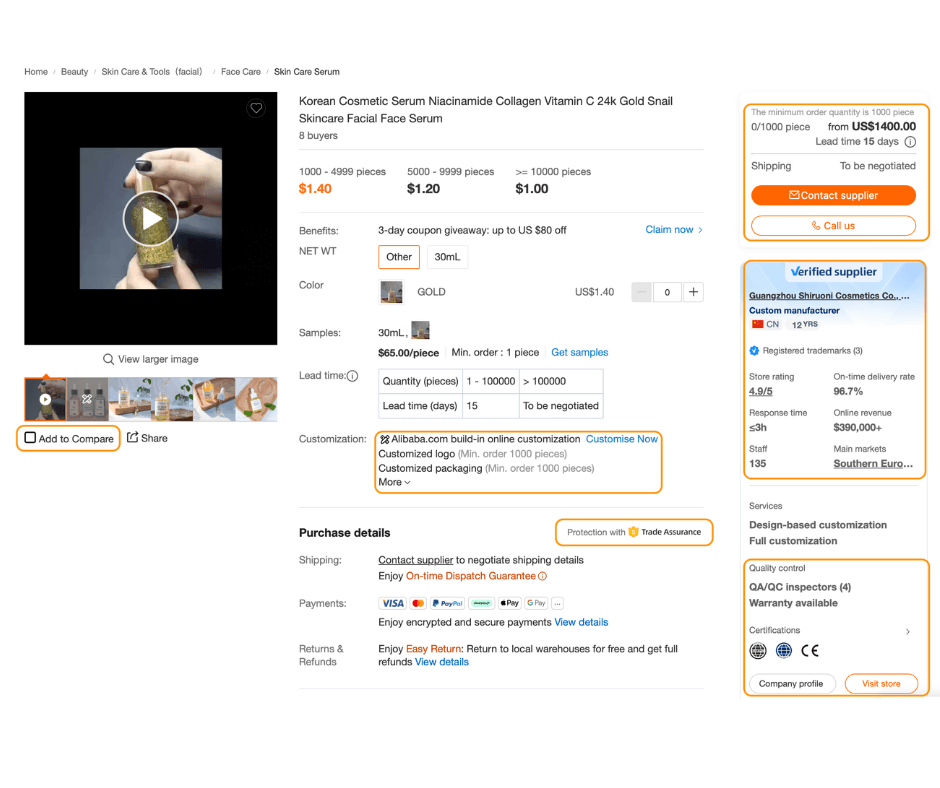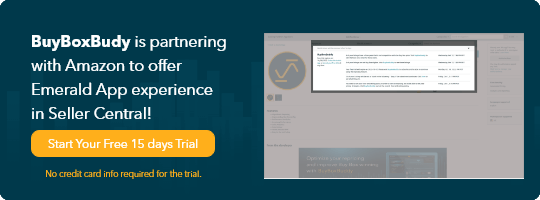
Armed with a brand new Amazon seller account, you might be looking for ways to source Amazon products from abroad. Here’s what foreign sellers on Amazon like you should know as they navigate this steep learning curve.
As Amazon expands its Global Selling network, foreign sellers on Amazon.com make up the lion’s share of active accounts. According to eComCrew, about 63% of Amazon US sellers are based in China and 2% in other foreign nations, with nearly a quarter of all products sold here produced in the city of Shenzen alone.
Clearly, there is great demand for foreign made products on all online venues. But it’s especially striking on Amazon US. So, if you’re thinking of selling Private LabelThis is what you call products manufactu… More products here, it’s time to weigh up your options for Amazon product sourcing and start eyeing manufacturers in Asia. But not before you clarify a few things.
What Category to Source Amazon Products For?
There are a few product categories on Amazon that are conducive to Private LabelThis is what you call products manufactu… More selling. This includes Beauty, Fashion, Electronics, Home & Kitchen, and Pet Supplies. To figure out if your ideal products are popular and profitable, you can use scouting tools or product research tools like SellerApp.
But just because a product sounds like a good fit for your company and it belongs to any of these categories doesn’t mean it will be a good fit for Amazon. There are fiscal and legal implications to consider before you start listing any item.
For instance, cosmetics and personal use products are classified for tax purposes by pharmaceutical affairs laws into 7 categories: oral care, skin care, sun care, hair care, decorative cosmetics, body care, and perfumes.
But there are only 2 categories on Amazon: Beauty & Personal Care and Health & Household. These, in turn, branch out into 21 sub-categories. Amazon may expect certain formalities for them, such as the voluntary FDA registration (VCRP), which used to be required for cosmetics with color additives.
Also, some products are restricted on Amazon, some categories require pre-approval on specific venues before listing, and some are subject to additional state or federal regulations. Even if the product itself is not restricted, various packaging, labeling, and listing rules may apply. That’s on top of any COA, SDS, CE marking, GMP, and other certifications you may need to arrange for it.
Who Should You Source Amazon Products For?
Before you start selling on Amazon, it is essential to understand your target audience. This involves knowing their demographics, interests, and shopping habits. As an established brand, you can access this information through Brand Registry’s demographics and analytics tools. But what if you’re a new seller?
Without research, you could end up relying on false assumptions about your target shoppers. For instance, you could market your cosmetics to young ladies, your electronics to middle-aged men, your pet products to boomers, and your household products to home-makers.
But Amazon is changing rapidly and so are its customers. There are 150 Prime buyers in the USA for every active seller account. Also, as of last year, Bridge millennials outnumber all other age groups when it comes to Prime subscriptions. Even as the USA is aging, Amazon’s Prime customer base is getting younger.
So, the best way to learn about your target audience is to try to approach a similar brand or an Amazon seller consultant for their insights. You could also try to sell similar products on Amazon for a while and check for patterns in your buyers’ shopping behavior and traits (the time of day or month they tend to place orders, price elasticity, regionality, name titles, delivery addresses, etc.).
How Can You Compete on Amazon?
Amazon is a unique marketplace. It’s highly competitive and the great majority of sales go through the Buy BoxThis refers to the situation where a sel… More. To win the Buy Box, you must not only have the best value offer, but also be able to reprice quicker than your competitors. Manual repricing is out of the question.
So, as you start to think about the type of product you’d like to sell, don’t overlook the repricing software. Some tools are designed specifically for resale, big brand, or Private Label, and some work well with consumables, discounts, or subscription items. But to our knowledge, none is faster, easier, or more versatile than our automated repricer, Buy Box Buddy.
Where to Source Amazon Products From?
There’s no shortage of software tools that can help you source Amazon products by identifying the manufacturers other sellers use (e.g., Supplier Database). But if you want to do things differently from your competitors or you just don’t want to share suppliers with them, it’s best to handle your Amazon product sourcing yourself.
One option for sourcing high-quality and trusted PL products is to work with established brands or manufacturers. However, working with established brands can be expensive, and it may be challenging to compete on price with other sellers.
If you don’t mind scouring the internet for information, you could also try online forums. Warrior Forum features free and paid information on PL manufacturers, SaleHoo Forum shares insight from members with a white range of experiences, and Reddit features suggestions from dedicated PL communities.
Then there’s always the option to go to a local store and check product boxes and labels for manufacturer information. If you have the time, you could also attend nearby trade shows and seller conferences, where you’re bound to meet suppliers and like-minded PL sellers.
Incidentally, the Private Label Manufacturers Association offers online and in-person workshops for PL sellers on its website, as well as a manufacturer directory and market data. There’s also a PLMA trade show later this year, with over 1,500 companies set to exhibit and some 5,000 attendees.
Another option is to source white labelThis term refers to a product whose manu… More goods from PL manufacturers. They can create custom formulations and packaging for your products, allowing you to differentiate yourself from competitors. They often offer lower minimum order quantities and more competitive pricing than established brands.
But where to find them? It’s not like there’s a supplier database for foreign manufacturers that even comes close to the Thomas US Supplier Engine or Wholesale Central directory. Well, here are a couple of platforms where you can find PL manufacturers that may specialize in your products:
- Global Sources. This B2B platform connects buyers with manufacturers from Asia. The platform covers a wide range of products and offers direct communication with suppliers.
- Alibaba. This leading online marketplace has changed tremendously in recent years. It now features built-in customization, comparison tools, company profile cards, 360-degree virtual tours, unfakeable reviews, and several contact options.

With Alibaba, there’s even Trade Assurance protection and the option to book and pay for an independent inspection of the supplier’s facilities. Add to this multi-lingual support, AI-driven security, and scores of payment options, and Alibaba easily becomes a top platform to source Amazon products.
Still, be sure to take all the necessary precautions before you make a deal or commit to an Alibaba order. For example, you could try these 9 steps for a safer transaction:
- Ask for samples in the colorway, size, and style you want your product to be manufactured, with the logo, graphics, and packaging customisations you need.
- Get multiple quotes from suppliers and negotiate volume-based prices.
- Double-check lead times and delivery methods.
- Go over their reviews and ask for clarifications in as few messages as possible.
- Have a look at the supplier’s tags and badges.
- Check if the supplier can take on any of your liability and look into liability insurance for your business.
- Go through the certifications (COA, CE, GMP), hazard documentation (SDS), and labels they can offer and check that they match Amazon’s compliance requirements.
- Get in touch with a legal professional who can advise and represent you when consumer safety or compliance are in question.
- Look into ways to overcome language barriers and communication mishaps (e.g., hire a liaison or an international trade specialist).
This covers the basics of Amazon product sourcing. But please follow our blog to find our what happens once you source Amazon products, and how to sail through the shipping and customs side of selling Private LabelThis is what you call products manufactu… More on Amazon.
*Disclaimer. We have no affiliation with any of the traders, suppliers, associations, platforms, or software tools listed above, aside from our automated repricer, BuyBoxBuddy. Our readers are advised to carry out their own research before using any of their services.

Melanie takes an active interest in all things Amazon. She keeps an eye on the latest developments and keeps Amazon sellers up to speed.







One Response
Thanks